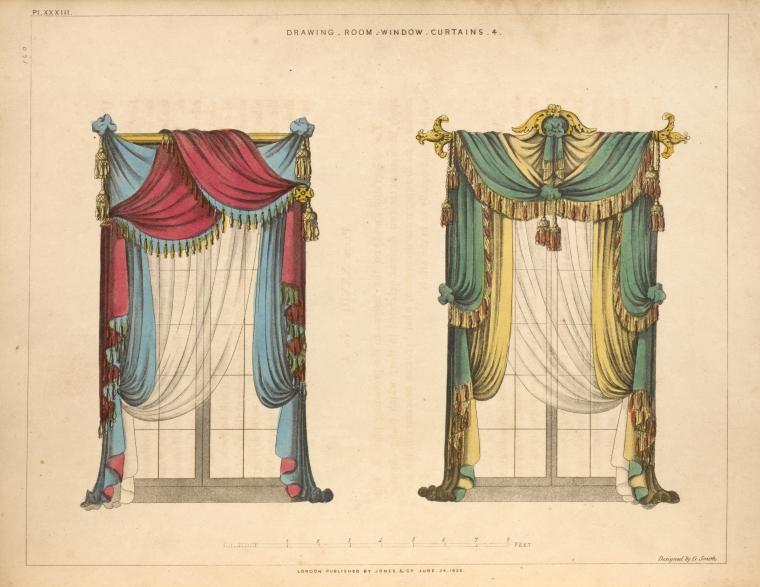
Curtain Styles 1900s to present
Curtain style trends have changed significantly over the last century and it’s fascinating to see how these changes have evolved.
This topic is particularly relevant to me because I was asked to make some very interesting and unique curtains that were popular in the early 19th Century! I love how my client has stayed true to her own style and hasn’t been influenced by current trends. I also love that we can look back through the history of curtains and reinvent a once popular style.
Turn of the Century
Up until now, all curtain headings were hand-sewn. Corded heading tapes were developed in the early 1900’s and revolutionised curtain making by speeding up the curtain making process. There was a rise in popularity of sill-length curtains because of the prevalence of radiators under windows. And thanks to the Art Deco movement in the 20’s and 30’s, fabrics for this period remained theatrical and bold.
By 1937 window treatments became more sober. Out went the extravagant Victorian style of swags and drapes. Curtain styles became more streamlined with contemporary, geometric patterned fabrics.
Post 1945
Without doubt, Colefax and Fowler has been the greatest influence in British curtain design and to this day remain a leading designer of fabrics. They developed what has become known as ‘English Country House’ style, developed during the post war rationing years, when they had to be inventive with what materials were available to them. The look was classic chintz, plain fabrics, perfectly proportioned top treatments.
Ready-made curtains started to appear in shops and catalogues during the 1940s, and were usually combined with plain pelmets and, later, Venetian blinds.
Because of rationing, a limited choice of dyes meant that most fabric featured just two or three colours on a neutral background. Gingham prevailed until the 1950s, when bold flower designs came into fashion, along with geometrics and abstract patterns inspired by science and technology.
1960s
The 1960s was a bit of a design revolution, not just for the curtain industry, as we all well know! Styles moved away from classic interiors to more informal living and fabrics became more colourful.
More man made materials were produced as a result of consumer demand for less expensive fabrics and technological advances in fibre production. As fabric became more affordable, curtain fullness doubled and curtains were lined and interlined.
As the decades progressed, patterns became smaller and soft pastels and ethnic textiles grew in popularity.
1980s – 1990s
The 1980’s saw a revival of the English Country House style. Valances became popular during this decade. By the 1990’s, plainer window treatments became popular, with neutral colour schemes and a more minimalist style. At the same time, roman blinds became fashionable – either on their own or with curtains.
Today
Window treatments in today’s homes are usually sympathetic to the architecture of the building but also influenced by personal style and current trends. As a curtain maker I see as many traditional styles of curtains as I do contemporary. We now have such a vast choice of fabrics, designs and styles as we as, of course, the use of imagery on social media for inspiration, that for the first time ever in history we have such freedom of choice when it comes to styling our windows.
One significant trend which has developed in recent years in the wave heading. Many homeowners are choosing to extend and renovate their homes which often includes large french windows or bi-fold doors. Wave curtains, which suit these windows perfectly have become a popular choice. Voiles or sheer fabrics drape beautifully from a wave heading. Roman blinds are also increasingly popular because they require far less fabric and therefore are more affordable.
As a maker of bespoke window treatments, I can work with you to create truly unique curtain styles, with one eye on developments in the industry but also never forgetting our heritage. Please give me a call on 07586 765156 or email me at [email protected] to discuss your interiors project.
Source: Merrick & Day The Encylopaedia of Curtains
